There are few dark places left. When you look at a map of the dark side of the world, tendrils of light stretch like spiderwebs between glowing cities, illuminating coastlines and rivercourses with knifelike precision. The few dark places that do remain are surrounded on every side by light. The Tibetan plateau’s grasslands, the Sahara Desert’s dunes, the forests of the Amazon and Africa’s Congo basin.
And the red heart of Australia.
In July, I joined scientists from The Nature Conservancy and the University of Queensland on a field expedition to gather data on how camels affect desert waterholes on Martu country. But before the fieldwork could begin, our route would take us across more than 350 kilometers of Australia’s remote and vast Western Desert — a red sea of sand and spinifex.
Welcome to Newman, Western Australia
You know you’re en route to a mining town when the sex ratio on the airplane is roughly 5 women to 100 men. We’re flying the length of the continent (and then some) from Brisbane to Perth, and then back inland to Newman.
Arid Australia unfolds below us, reduced by altitude to a monochromatic expanse of vast, unyielding redness. Unnaturally straight roads cut through the desert, stretching off to unknown — or perhaps nonexistent — destinations. The only visible features are undulating, multi-kilometer-long dunes rolling like waves across a sea of sand. (I’d later learn that 40 percent of the continent is covered with these dunes.)
Shapes and colors reform as the plane descends. The effects of water are still visible in a landscape defined by its absence; empty river deltas branch over the pointillist landscape like errant watercolor stains. Minutes from landing I can pick out skeletal vegetation and clumps of khaki-green spinifex, blotched across the red earth like stromatolites on a sand reef.
Wheels touch down on tarmac. The pilot welcomes us to Newman, which might as well be the official Middle of Nowhere.
Perched on the eastern edge of the Pilbara, Newman owes its entire existence to the mining company BHP Billiton, and the running joke is that the company sold the town’s land back to the Australian government for $1. I almost believe it.
The open-pit ore mine is visible in the distance as we head into town, driving past empty housing developments — plans gutted by economic downturn — where row upon row of neighborhood streets with nothing but newly minted street signs and sewer hookups. Nearly every car we pass is a white, dust-covered work truck and the town’s inhabitants seem to be mostly work-hardened men decked out in eye-melting fluorescent orange and yellow shirts.
It looks exactly like a mining town in outback Australia should: minimalist, dusty, and unintentionally interesting.
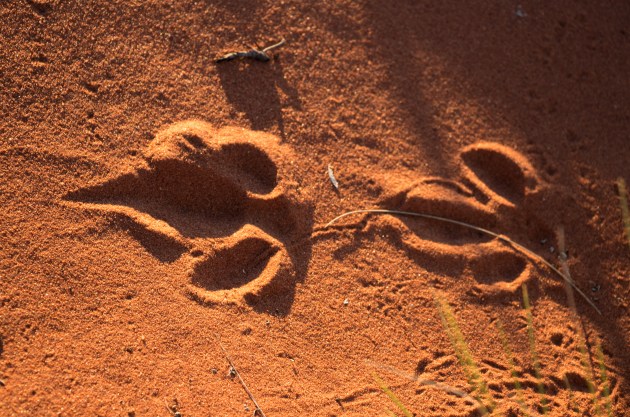
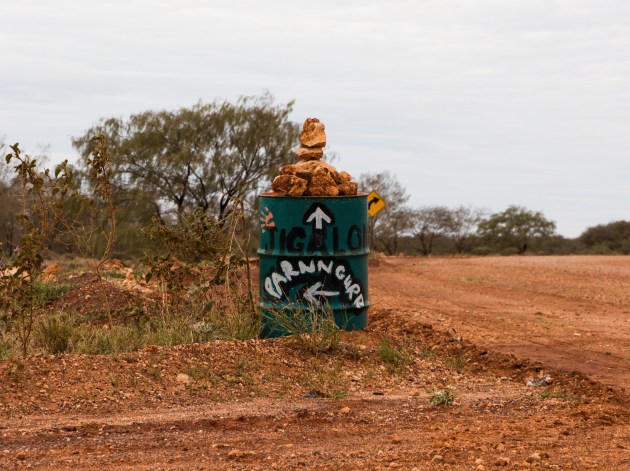
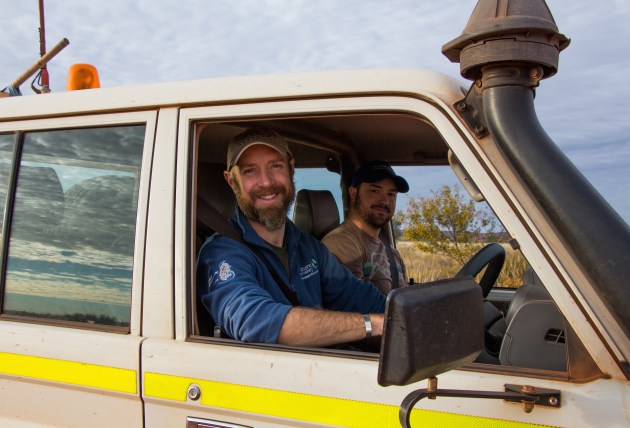
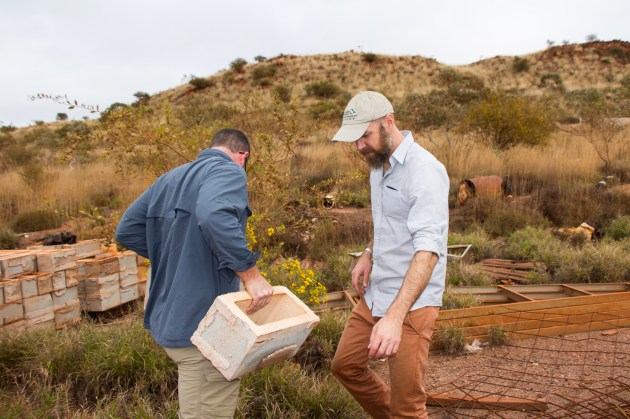
© Justine E. Hausheer / TNC
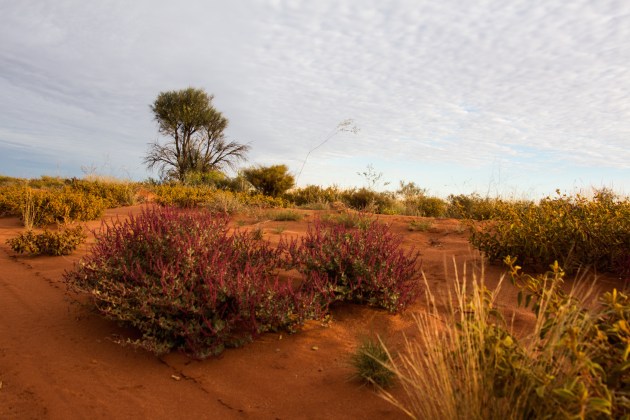
© Justine E. Hausheer / TNC
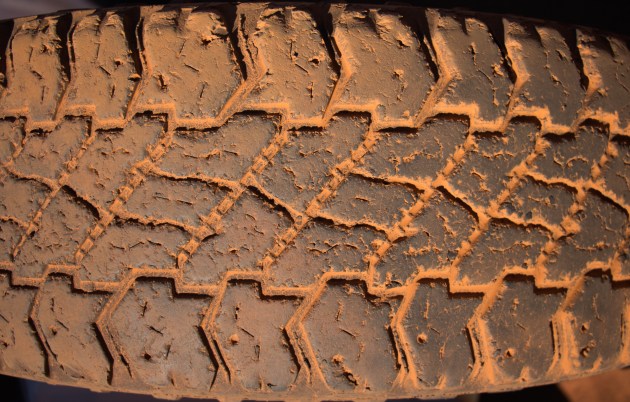
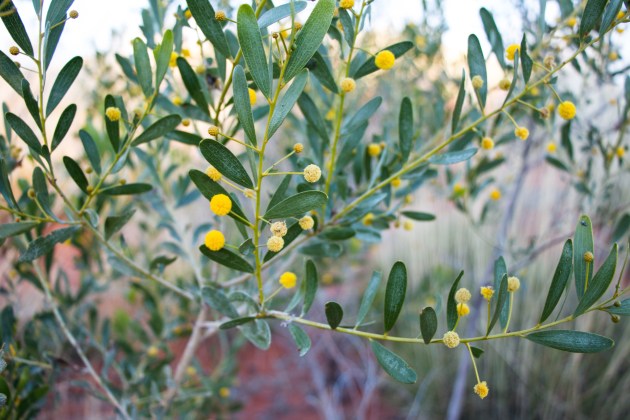
Dumpster Diving for Science
The next morning I’m awakened by the screeches of 100+ filthy, dust-dyed little corellas crawling about the artificially green lawn across the street from the hotel. Parrots in the desert seems completely absurd, but then again we’re in Australia.
Eddie, Chris and I load up our own dust-covered Land Cruiser with duffel bags of gear and grocery-filled eskies. Before starting our long drive into the desert we still need to obtain a few more pieces of complex scientific equipment: cinder blocks and a big stick. Seriously.
We find the stick at the hardware store, where a sign on the door instructs me that I really, really need this fluro shirt. After few left turns — and a discussion on the various words English-speaking countries use for trash (refuse, rubbish, garbage) and giant piles of it (dump, tip, landfill) — we find ourselves at the Newman dump. A little rummaging soon turns up 10 sturdy cinderblocks that we’ll use to weigh down our data loggers in the waterholes. The tip attendant quotes us a price of $10 Australian, which will make for my most interesting expense report entry yet. No one can excuse us of exorbitant spending.
Finally ready, we take the north road out of town and head into the bush. Only 355 kilometers to Parnngurr.
Beyond the Bitumen
The bitumen ends after just a few dozen kilometers and immediately the roadside is littered with flipped cars; their rusting, desert-beaten undercarriage glinting in the sunlight. Eddie explains the two strategies of desert transport: invest in an expensive vehicle and hope you get your money’s worth, or buy a handful of cheap junkers and discard them as they wear out. (I’m not really sure which philosophy the owners of our car adhere to.)
After 53 kilometers we turn east, following the pristine, new blue-and-white signs that point the way to Jigalong, and then Parnngurr. The original waypoints seem more appropriate: multicolored, painted oil drums topped with rock cairns.
The road continues … across washes and through gum groves, over cattle grates and past brown cows — staring blankly at us and flicking their tails — and past the Rabbit-Proof Fence. Nothing visible remains of the world’s most (in)famous folly in invasive species management except a printed sign marking the spot.
More than three hours into the drive the pastoral country begin to fade into true desert. Old burns emerge, where the earth changes to deep grey-purple amid the skeletal, burned acacias and termite mounds stand sentinel above the waving spinifex. Around noon we stop to wolf down pastrami sandwiches in the shade of a casuarina. And then we drive on, deeper and deeper into the desert’s heart.
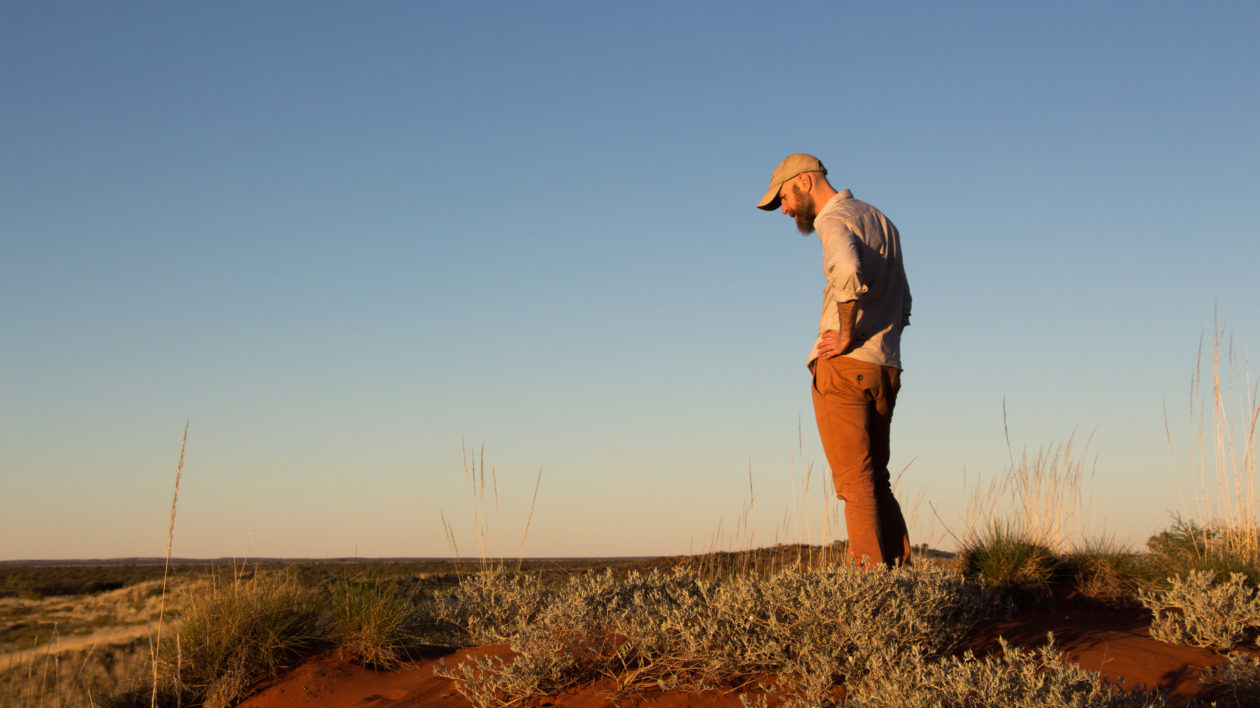
8 Kilometers to Water
We’re soon within spitting distance of Karlamilyi National Park, and despite the long day none of us want to pass on the opportunity for a detour. There’s no sign for the track into the park, but our handwritten directions indicate that we should look for a sign that says “8km to Water.” After two wrong turns we find the way, but not before passing a white, rusting washing machine sitting innocuously by the side of the track.
Karlamilyi is beautiful, lunar. Volcanic-looking eroded escarpments erupt from the earth. Shards of quartz litter the ground, glittering in the afternoon sun, and larger outcroppings emerge from the sand like a wind-excavated skeleton. You know you’re in an old, old land when even the quartz is eroded smooth.
The park is a good lesson in Australia’s astounding people-to-land ratio: It’s the second-largest national park in the country — spanning nearly 5,000 square miles — but it has no on-site staff and annual visitor tallies hover in the double-digits. We’re likely the only people in the entire park at the moment.
The sun dips back towards the earth as watermelon-pink galah parrots wing their way across the road. We pull over for a final stop at the edge of the park, climbing up the back of a sand dune bordered by gum trees. We walk the ridge, our footprints falling next to tracks from emu, bustard, and unknown mammals and lizards.
New colors appear as the harsh mid-day light fades — ochre-red earth, bone-white gum bark and green-grey leaves, rich yellow acacia flowers — every hue saturated after a millennium boiling in the desert sun.
The desert is silent as we follow bustard tracks back to the car.
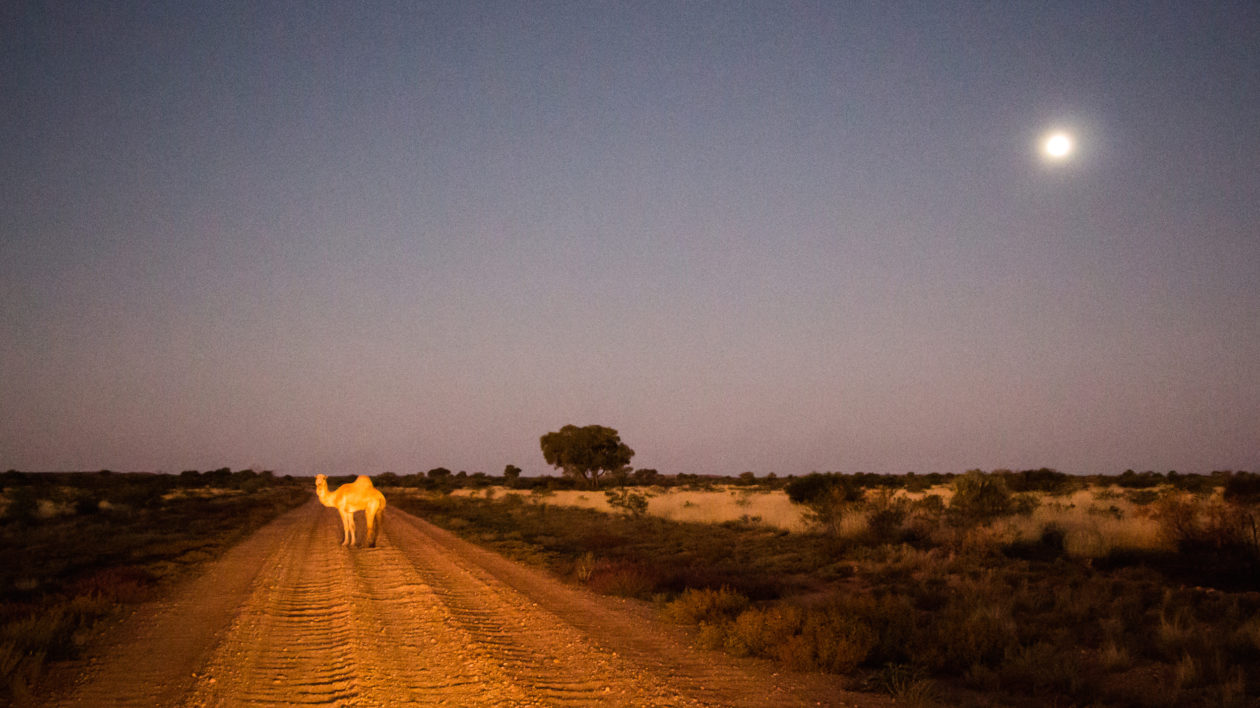
Camels Point the Way to Parnngurr
A swollen moon rises over the road and the desert colors change again as we drive on into the dusk… warm, bleeding reds merging into to maroon, navy, and purple. Our headlights glare off of a camel pelvis and spinal column standing sentinel on the roadside.
Within 5 kilometres of Parnngurr we run up behind an old, gimpy camel hitching itself down the road. It stops, pivoting its head around to stare at us, perhaps with loathing, before walking off into the setting sun. Soon after we come across four more camels, a surly looking mob that repeatedly scurries off the track and then stops to growl at us before walking nonchalantly alongside the road.
Soon Parnngurr comes into view, a scattershot of tiny, cold lights in the dark. Our home for the next week in the middle of this vast, luminous desert.
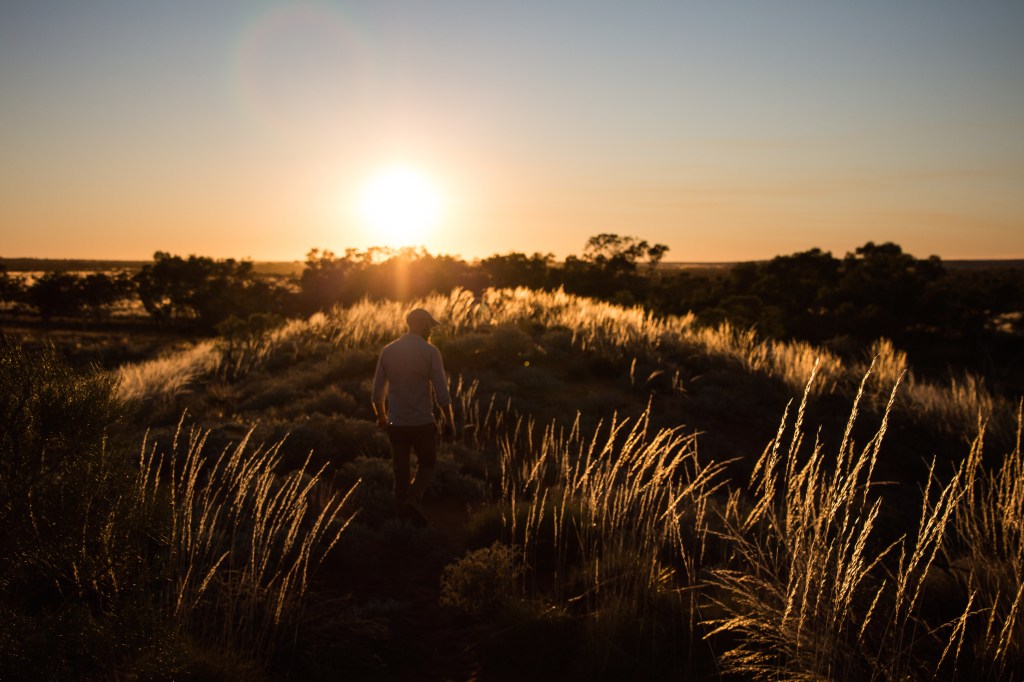



Justine, this sounds like such an adventure! We follow you here and love your words. Keep them coming, Thanks!